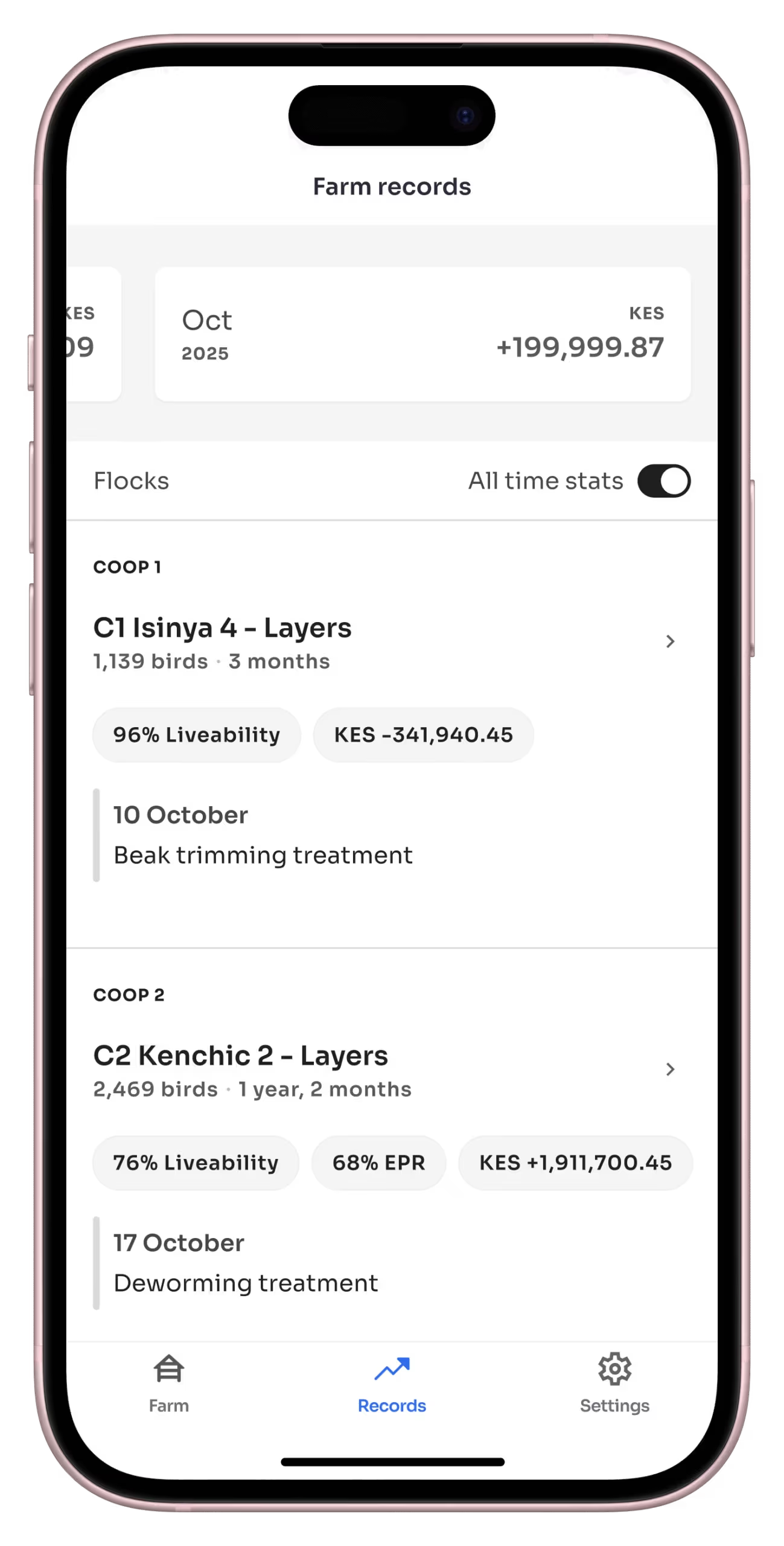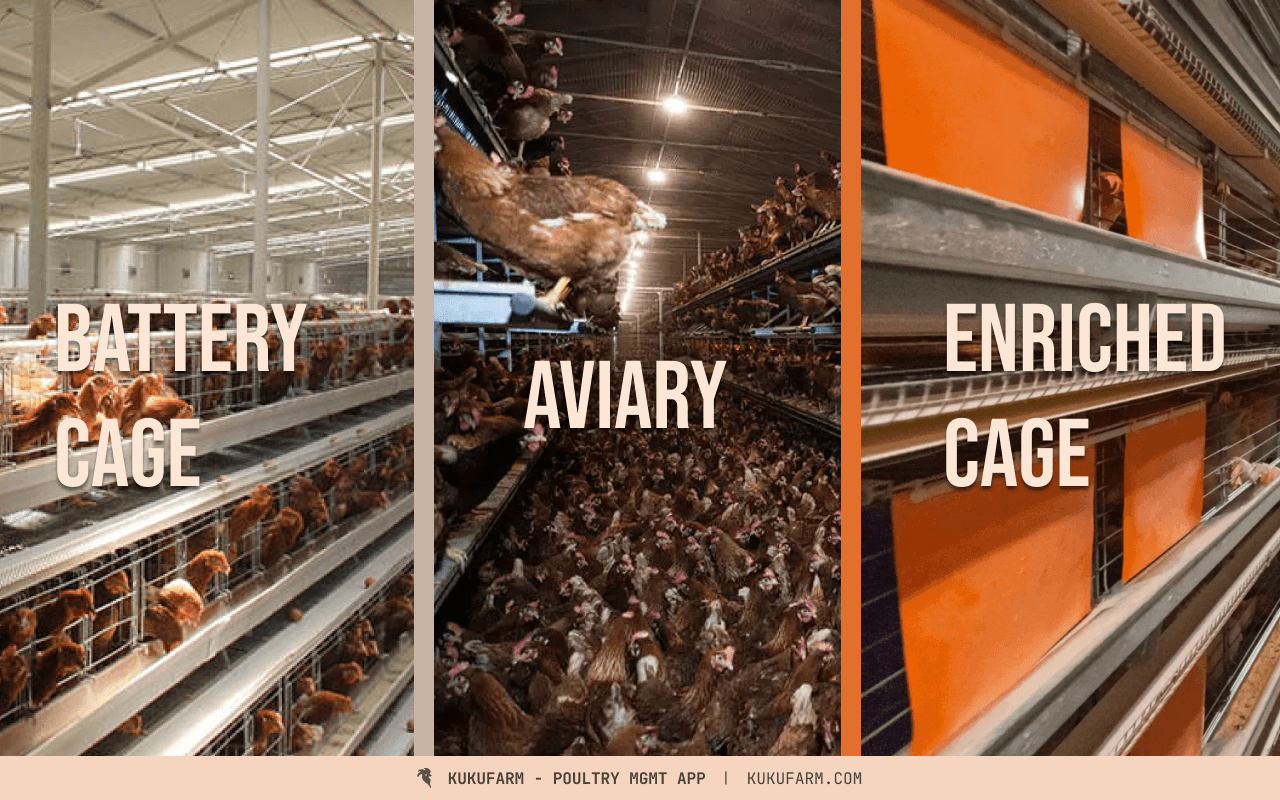When setting up your poultry coop, you can select from 8 types of poultry houses. Notably, each type offers unique advantages and caters to specific farming practices. Thus, the choice will come down to your resources and preferences.

Typically, poultry housing types are referred to as poultry systems. Below is a quick overview of eight common types of poultry houses to help you make informed decisions.
Also see a detailed look at types of poultry housing systems.You may also be interested in how extensive poultry systems compare.

What is a poultry house system
Simply put, a poultry house, or poultry housing system refers to the flock management methods you use in raising your poultry birds. Some factors that determine a poultry system include:
- Feed type – e.g. pastures vs. processed feeds
- Living surface – e.g. deep litter, slatted floor, etc
- Affordance to movement – e.g. free range, cages
- Access to outdoors and pasture – e.g. extensive vs. intensive
Moreover, poultry houses are categorised as either extensive or intensive, as you can see from the chart above. Here is our comparison of extensive and intensive poultry systems.

8 Types of poultry houses
1. Free Range
First, free range systems allow your poultry, especially chickens, to roam outdoors during the day while providing shelter at night. This method promotes natural behaviors and enhances animal welfare.

Additionally, free-range birds often enjoy a more diverse diet, improving the quality of their eggs and meat. Just remember to implement effective predator control and manage environmental conditions to protect your flock.
2. Semi-Intensive
Next, consider semi-intensive systems, which combine elements of free-range and conventional housing. In this type of poultry house, your birds can access outdoor areas for foraging while spending significant time in a controlled environment.

Semi-intensive system balances welfare and production efficiency, allowing your birds to exhibit natural behaviors while benefiting from protection against predators and harsh weather.
3. Folding Units
A folding unit is a portable housing structure ideal for both small and large flocks. These mobile units allow you to relocate your birds to fresh areas, enabling them to forage in new pastures regularly.
Essentially, a folding unit system flexibility helps you manage waste and reduces the risk of disease, making folding units a versatile option for small-scale and organic farming.
4. Deep Litter
Another effective type of poultry house is the deep litter system, which uses bedding material like straw or wood shavings spread across the floor. This bedding absorbs moisture and waste, creating a natural composting process that generates heat and insulation.

Not only is this method low-maintenance, but it also improves your birds’ health by providing a comfortable environment.
5. Slatted Floor
If you prefer a cleaner environment, consider slatted floor systems. These structures feature a raised floor with slats that allow waste to drop through, keeping the living area tidy.

A slatted floor system promotes better hygiene and reduces ammonia buildup, which can harm your birds. Slatted floors are commonly used in intensive poultry production, especially for broilers and layers.
6. Aviary
Aviary systems offer another option, providing multi-level spaces for your birds to move around freely. These type of poultry housing can accommodate large flocks and often include perches, nesting areas, and foraging opportunities.

Aviaries promote natural behaviors, making them an excellent choice for layer production, where your hens can enjoy more freedom than in traditional cages.
7. Battery Cages
A battery cage systems house hens in small individual cages for high-density production.

While this type of poultry house maximizes space and simplifies management, it faces criticism for limiting the birds’ movement and natural behaviors. Keep in mind that some regions are phasing out battery cages in favor of more humane alternatives.
8. Furnished Cages
Finally, you can consider furnished cages as an improvement over traditional battery cages. Essentially, furnished or enriched cages offer hens more space and additional features such as perches, nesting boxes, and scratching areas.

Furnished cages aim to balance efficient production with enhanced animal welfare, allowing your hens to engage in some natural behaviors while still being housed in a controlled environment.
Here is an overview of the furnished cage poultry system.
How do types of types of poultry houses compare
The million dollar question that you have to ask yourself is what type of poultry house is best for you. In our opinion, it boils down to your resources, personal preferences and local regulation. For instance,
- Do you have access to pastures or are limited to a small space?
- Are you raising commercial birds or for own consumption?
- What poultry systems are permitted in your region?
- Do you want to raise birds organically or conventionally?
- Is scientific farming method your thing?
- Are you looking for a system that is automate-able?

Answering these kinds of questions will enable you to choose a poultry housing best suited for your needs. To get you started, here are our thoughts on how to pick the best poultry housing system. For your interest, we’ve also done some comparisons:
- Deep litter vs. slatted floor
- Free range vs. Deep litter
- Deep litter vs caged poultry systems
- Cage systems vs. aviary
- Deep litter vs Aviary poultry systems
- Cage vs slatted floor poultry systems
- Free range vs caged poultry systems
- Cages vs aviary systems
- Extensive VS Intensive poultry systems
- Intensive poultry systems compared
- Which poultry system is better for poultry health and welfare?

Conclusion
In conclusion, selecting the right type of poultry houses is crucial for optimizing production and ensuring the welfare of your birds.
Each housing system has its advantages and challenges, and your choice often depends on factors such as the species of poultry, your farming goals, and local regulations.
By understanding these various types of poultry houses, you can make informed decisions that benefit both your operation and your flock.

If you’re looking for a poultry management and flock records solution, Kukufarm’s got your back.

